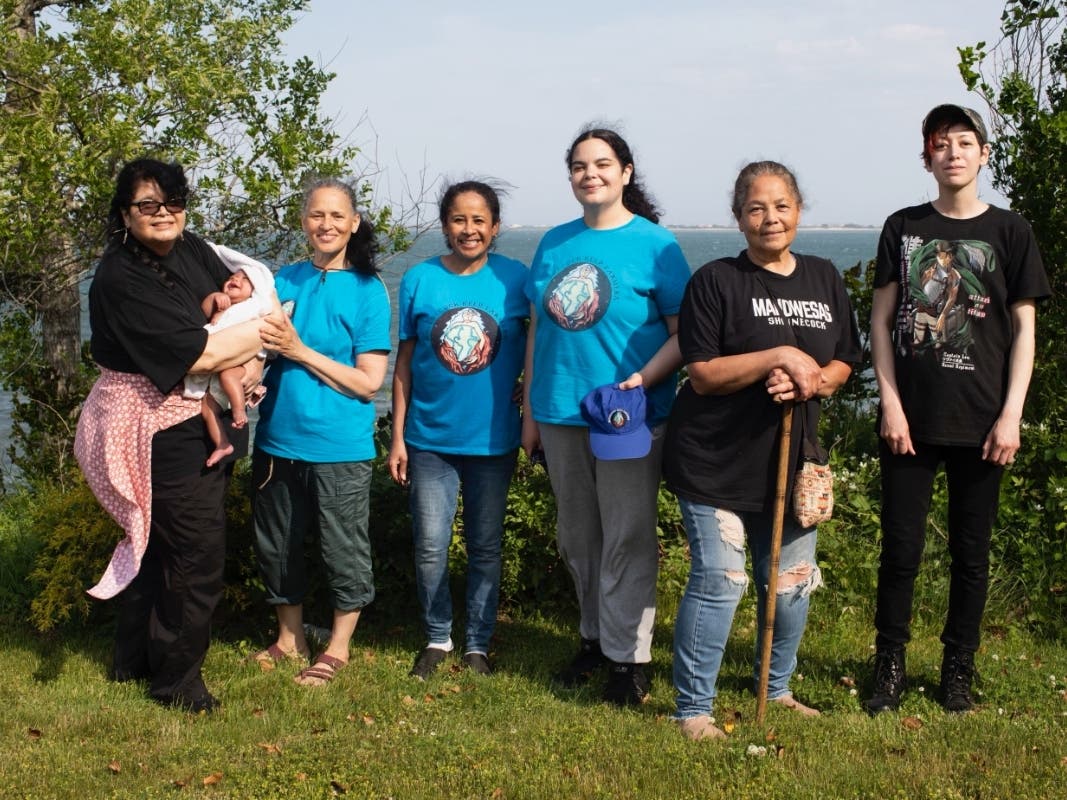Business & Tech
Shinnecock Kelp Farmers To Expand In Southampton
"When we combine traditional ecological knowledge with cutting-edge science, we see leaps and bounds in what we can do."

SOUTHAMPTON, NY — A woman-led group, the Shinnecock Kelp Farmers, are looking to the future and expanding their Southampton hatchery with an eye toward restoring water quality and other benefits.
The multi-generational group of women, the first Indigenous-owned and operated kelp farm on the East Coast, was recently awarded $75,000 by the Nature Conservancy to capture carbon and reduce nitrogen pollution in Shinnecock Bay.
"Leveraging knowledge drawn from an over 10,000-year relationship with the sea and seaweed, the Shinnecock Kelp Farmers intend to expand the hatchery so that kelp can be grown for its many ecologically restorative water-quality, habitat, and climate benefits," the group said.
Find out what's happening in Southamptonwith free, real-time updates from Patch.
Eventually, the plan is to sustainably harvest the kelp at scale to provide an eco-friendly alternative to conventional fertilizer, they added.
For thousands of years, the group said, the Shinnecock people have relied on the water for sustenance.
Find out what's happening in Southamptonwith free, real-time updates from Patch.
"As real estate development and population growth rapidly increased in the region around Shinnecock Bay, water quality and biodiversity declined," the Shinnecock Kelp Farmers explained.
Studies by The Nature Conservancy and partners found that nitrogen pollution from aging septic systems and fertilizer runoff was at the root of the decline, they added.
Feeling the need to carry forward the responsibility to protect the water with which their traditions are intertwined, the Shinnecock Kelp Farmers began work on their kelp farm hatchery in 2020 to revive Shinnecock Bay, they said.
By developing a business model that is Indigenous-led from “seed to sale,” the Shinnecock Kelp Farmers also hope to create and sustain green jobs that empower the Shinnecock tribal community, help restore marine habitat and improve water quality in Shinnecock Bay and beyond, they added.
Within the first season, scallops, clams, sea horses and other species that have experienced sharp declines in Shinnecock Bay were seen exploring and sheltering in their kelp lines, those involved noted.
The group has shared their findings at conferences in Alaska, and, more recently, at the Washington Seaweed Knowledge Symposium. Currently, they are working with GreenWave, the Sisters of Saint Joseph and researchers at the School of Marine & Atmospheric Sciences at Stony Brook University to study how to transport and filter water from the bay to support and scale the hatchery’s work in a sustainable way, they said.
“For years, it was projected that by 2050, our reservation would be underwater due to climate change induced sea-level rise. That timeline has since moved up to 2040. Urgent problems exist, and they can no longer be ignored,” Tela Troge, director of the Shinnecock Kelp Farmers, said. “When we combine traditional ecological knowledge with cutting-edge science, we see leaps and bounds in what we can do. We are grateful for this support and partnership with the Nature Conservancy, and it is a promising start for what needs to be done considering the time that we have to do it.”
“We are honored to support and learn from the innovative work of the Shinnecock Kelp Farmers,” said Bill Ulfelder, executive director of the Nature Conservancy in New York. “It’s important to acknowledge and address past injustices inflicted on Indigenous peoples. When we support and promote Indigenous-led conservation efforts like the Shinnecock Kelp Farmers, we help reduce pollution, improve water quality and promote the health and resilience of all nature, humanity included.”
The benefits of farmed and wild kelp are multifold, all agreed. Kelp improves local water quality over time by absorbing nitrogen, which currently makes its way to the waters of Long Island through runoff from conventional fertilizers and polluting septic systems. Kelp can also help restore biodiversity in the local ecosystems by providing habitat for wildlife, shielding coastlines from the full force of storms to help reduce erosion, and buffering the effects of ocean acidification at a localized level, the Shinnecock Kelp Farmers explained.
Support was provided through the Nature Conservancy in New York’s Common Ground Fund, which was established to catalyze and enable new and existing conservation work in New York that advances equity, justice, and land sovereignty, the Nature Conservancy said.
Get more local news delivered straight to your inbox. Sign up for free Patch newsletters and alerts.